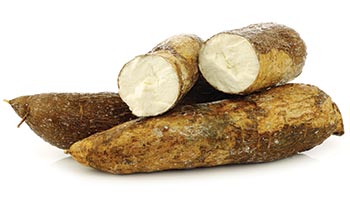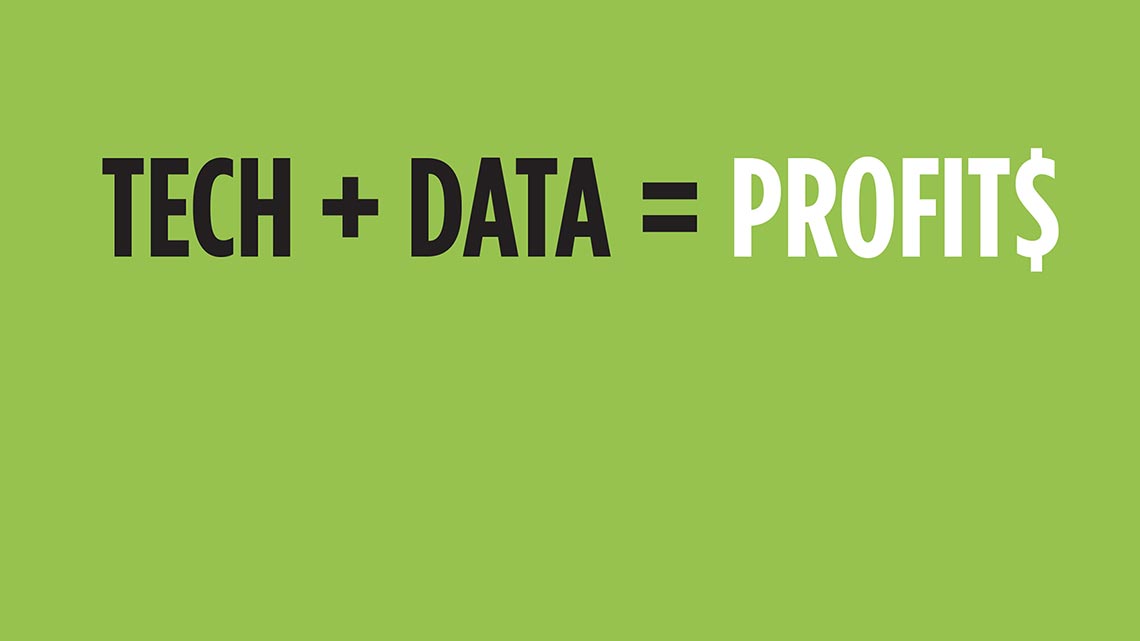Companies are deploying new precision technologies to collect more data and help farmers make better business decisions
The world’s global population is projected to balloon from 7.2 billion to 9.6 billion by 2050, according to the United Nations. Much of that growth will take place in developing countries, with about half of the growth occurring on the African continent, according to the United Nations. India’s population is expected to rise to 1.45 million and surpass China as the world’s most populous nation. Life expectancy in developed and developing countries is also expected to go up, increasing to 76 by 2045.
9.6 billion by 2050.
Few sectors will feel the impact of this growth like the agricultural industry. Experts say that in order to feed the world’s population by 2050 and guarantee food security, food producers will have to increase production by 60 percent or perhaps even double it.
It is a herculean task that will require a marriage of innovation, technology and a skillful and smarter use of data by agribusinesses, including seed companies.
“If we’re going to double food production by 2050, we are going to have to get a lot better at productivity and doubling production,” says Sam Fiorello, chief operating officer at the Donald Danforth Plant Science Center, an independent nonprofit research organization in St. Louis, Missouri. “We are faced with the doubling of agricultural productivity. The only way to make sure we get there is to get more crops per unit. We need to eke out as much output as possible.”
One of the keys to boosting productivity, says Fiorello, is for the agricultural industry to analyze data more quickly and efficiently. Several experts say a data-driven approach to farming can help producers boost production and revenues while driving down input expenses.
Through the years, several nonprofits, research institutes and universities have waded into the business of mining data. Big agricultural companies traffic in data, such as weather statistics. They analyze satellite information to help provide farm management advice. Many sell data services to help farmers make more informed management decisions, such as which seeds to plant and the best time to apply fertilizer and pesticide.
For example Monsanto uses a technology that analyzes millions of seeds by feeding them through a machine. These analyses yield information that has the potential to enhance the productivity and bottom lines of producers, including seed performance in specific parts of the field.
Fiorello says the Danforth center puts technology advances to work in the developed world, as well as in developing countries and regions. For example, it is analyzing large amounts of data and using that data to make crops such as cassava — a staple in sub-Saharan Africa — more disease resistance.
Research for producing more disease resistance cassava is supported by the Bill and Melinda Gates Foundation.
“Cassava grows in marginal soils, and it lasts for years,” says Fiorello. However, he explains that the crop has been susceptible to a plant virus, and it delivers empty calories. But rather than try and convince Nigerian villagers that it’s not good for them, Fiorello’s team takes the data and uses it to better understand the plant so it can embed resistance to the virus.
In doing so, the Danforth Plant Science Center partners with the World Bank and the national agricultural labs in Kenya, Uganda and Nigeria.
We take the latest technology that millions and millions of dollars has been spent on and use it to help the poorest of the poor, Fiorello shares. “We use it to help solve the problems of hundreds of millions of people,” he says.
This data generation has resulted in the creation of genomic selection, which uses a statistical model to predict how a plant will perform prior to field testing.

The growing importance of data in farming and seed production leads to a heightened partnership between the two.
But some farmers’ groups have raised concerns about how this relationship would play out for producers. They worry that the data might be used to benefit the companies rather than the farmers.
According to a 2013 American Farm Bureau Federation survey, nine out of 10 farmers said they were not sure how the data collected on them was being used, and three out of four worried that the information could be used by the companies to further the companies’ own commercial interests or perhaps even accessed by uninvited government agencies.
“We use [data] to help solve the problems of hundreds of millions of people.”
— Sam Fiorello
Still, if set up correctly, the exchange of data between farmers and seed companies could boost production and farm revenues, while helping seed companies provide stronger, more reliable customer service.
Ron Milby, executive director of agronomy marketing for Growmark, Inc., a Bloomington, Illinois-based farm cooperative, says technology and data collection are evolving steadily to a point where more on farm research is imminent.
“We will be able to do more research on the farm and get more immediate results,” Milby says. “We’re all in it for the farmer. If we can’t have the farmer producing more, we are spinning our wheels.”
Here are a few ways that seed companies can use data to better serve their customers while leading to a mutually beneficial relationship.
Bolster Variety Trials
Replicated variety trials, while time consuming and sometimes costly, are good for credibility. They are also great testimonials to show farmers when making seed recommendations.
As far as general information out there, one of the most efficient places to go is to your local university, says Gaylon Morgan, a Texas A&M University professor and Extension cotton agronomist.
“Those trials are replicated variety trials,” he says. “One wheat uniform variety trial we did was conducted in 25-plus locations across Texas. In cotton, we do 45 across the state.”
Morgan explains that the cotton breeders conducted another eight to 10 official variety trials subsidized by Cotton Incorporated. “As soon as we get the information processed, we put it on the website and send an announcement to seed companies and producers,” he says.
Seed Matrix also compiles variety information. It goes through university websites, extracts information and compiles it into a system that allows users to do geographic comparisons of varieties.
“It’s a very powerful tool,” Morgan says. “Several companies use it. You can compare your varieties against those of competitors.”
For seed companies that want to see how varieties measure up, Seed Matrix will sort the top 10 percent, the middle quartile and the bottom quartile.
Team Up
Consider teaming up with competitors to get better results for producers.
Some say that as data mining increases in stature within the agriculture industry, it will be difficult for some segments of the industry, including seed companies, to sail alone on research.
“The model we’re seeing is one we saw in the pharmaceutical industry,” Fiorello explains. “The problems are too big for any one company — even for a giant company.”
More and more seed companies are looking to partner with organizations such as the Danforth Plant Science Center and other institutes and universities. In the pharmaceutical industry, the Pfizers and the Mercks are doing less and less research on their own.
Fiorello says that these companies are leveraging their distribution networks. “When they are fighting things like viruses and new diseases, they have to constantly work to stay ahead,” he says.
Use Objective Data
“The most important component from a consumer standpoint is to use as much objective data as possible,” says Forrest Smith, the Dan L. Duncan endowed director of the South Texas Natives and Texas Native Seeds Projects, which are part of the Caesar Kleberg Wildlife Research Institute. “Consumers will be more likely to trust data that is more objective and that is from someone who is not involved financially in that product.
“We’re all in it for the farmer. If we can’t have the farmer producing more, we are spinning our wheels.”
— Ron Milby
“Often times the consumer is trying to evaluate two products. Both might make substantial claims, but there’s been very little comparative trial. There are probably 70 to 80 native seed varieties developed by different seed companies but nobody had ever brought them together and compared.”
Smith says trials like that can shed light and help guide seed companies to success in the end.
“The more objective the information, the better off everybody is,” he says.
Focus On Quality
Another footnote is seed companies need to look at the quality of the information they’re getting. Many times, data is provided from non-replicated trials, which means without standard errors.
A big number without supporting information about how the data was collected could be misleading and unclear. Objectivity and accuracy are very important.”
Increase Ease of Use
“We’re ahead of the curve of in our ability to gather data,” Fiorello says. “The challenge is to put it in a form easy enough for farmers to understand. We could have a situation where they are drowning in data but thirsty for information.
“The question is, how do you make it so companies share the data and have ease of use? If not, you could have a world where you’re generating data and not making any sense of it.”
Fiorello explains that the data being acquired now is being pushed very quickly into breeding programs to help accelerate new lines. Seed companies are already using massive amounts of data.
One example is in breeding programs. “We’ve got to get better about the ease of using it in the field,” he shares.
Morgan adds: “The companies realize the value in getting good information to producers. It behooves us all to get the best information to producers — whether on yield or quality or both.”
Build Trust
Growmark’s Milby says that in addition to using the data to get results for customers, it is important to build trust.
“Data ownership and data use is huge — and of course access,” Milby says. “Since we are farmer owned, we take the stance that the farmer owns the data. We tend to side with the farmer. A lot of times we have that trusted relationship with farmers.”
Milby says it’s critical that they work to keep that trust. A farmer will trust a local seed sales person before a company, he says. “As the person working with the farmer, we must be able to articulate what we are collecting and how this data will be used,” he says. “We also need to take the necessary steps to ensure the data doesn’t end up in the wrong hands.”
Fiorello says rapid technological advances are on the horizon and data will play a key role in ensuring their effectiveness.
“We will see drones and other devices going over farm fields, acquiring data and pushing them to a central processing system,” Fiorello says. “Field-based phenotyping will help farmers quickly assess what’s happening in their fields. It will send a signal, and the farmer can deploy tractor. We’re on the cusp of that.”
It’s all about the data —acquiring it, manipulating it and using it.”














